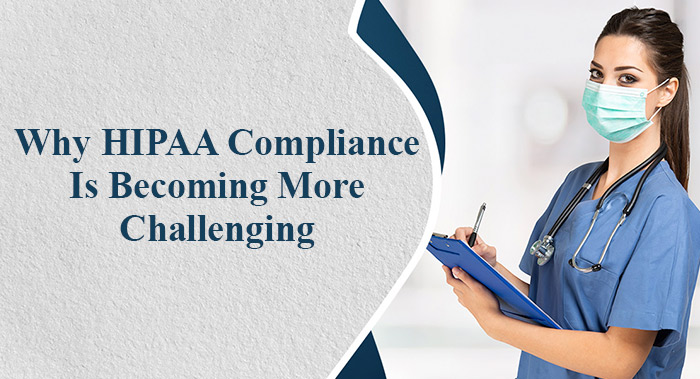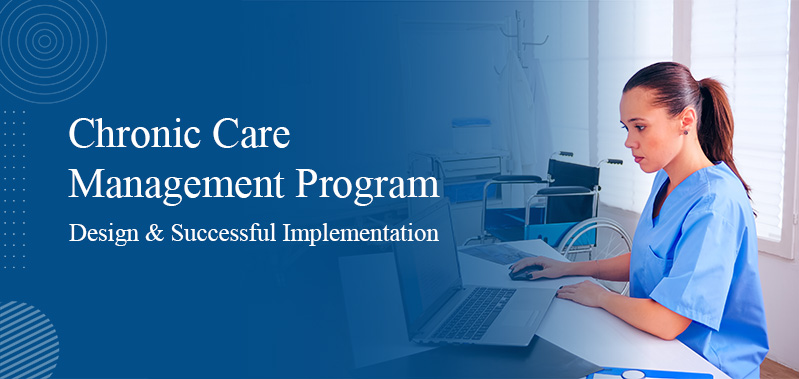
Why HIPAA Compliance Is Becoming More Challenging
Years go by, but the healthcare industry stays rife with change. HIPAA is one of the most complex laws that evolve with the newest compliance trends. Adapting HIPAA changes for 2024 is bound to come in the way of healthcare professionals and providers. Being on the cusp of industry changes always pays off regarding HIPAA compliance and avoiding huge penalties.
Read to learn why HIPAA compliance is becoming more challenging and the effective ways to navigate it in 2024. Keep reading!
What is HIPAA Compliance?
The Health Insurance Portability and Accountability Act (HIPAA) came into effect in 1996 and primarily focuses on the security and privacy of patients' protected health information (PHI) with prerequisite standards. Organizations handling protected health information (PHI) must establish and adhere to physical, network, and procedural security protocols to guarantee compliance with HIPAA regulations.
Covered entities (those involved in healthcare treatment, payment, and operations) and business associates (those with access to patient data, supporting treatment, payment, or operations) must fulfill HIPAA requirements. Also, subcontractors and related entities engaging as business associates must ensure compliance.
HIPAA Privacy and Security Rule
It’s crucial to acknowledge HIPAA privacy and security rules to navigate the HIPAA changes for 2024.
Privacy Rule
Since 2003, the HIPAA Privacy Rule has enforced nationwide standards safeguarding individuals' medical records and personal health data. It extends to healthcare providers, health plan administrators, clearinghouses, and specific electronic healthcare transactions.
This rule mandates implementing measures to secure Protected Health Information (PHI) and establishes guidelines and constraints on the usage and disclosure of PHI without explicit patient consent. It empowers patients or their representatives to obtain and review their records, allowing them to request corrections as necessary.
Entities governed by HIPAA must respond to patient access requests within 30 days. Additionally, they must furnish Notices of Privacy Practices (NPPs) to elucidate how patient data will be utilized or shared.
Security Rule
Comprehending the HIPAA Security Rule holds immense importance for healthcare entities as it sets out the imperative security standards for safeguarding electronic Protected Health Information (ePHI). This rule specifically targets safeguarding individuals' ePHI generated, received, utilized, or stored by HIPAA-covered entities. It lays down a framework of standards and protective measures to ensure the confidentiality, integrity, and overall security of ePHI. Moreover, the HIPAA Security Rule mandates a comprehensive risk assessment to pinpoint vulnerabilities and security threats to ePHI.
Outlined within the Security Rule are three categories of safeguards:
- Technical Safeguards pertain to the technological aspects employed for ePHI protection and accessibility. Implementing robust security measures, such as encryption and secure authentication, is pivotal in complying with the HIPAA Security Rule.
- Physical Safeguards are responsible for regulating physical access to ePHI, irrespective of its location. Securing workstations used for ePHI access against unauthorized entry is essential.
- Administrative Safeguards encompassing the actions, policies, and procedures governing ePHI protection and overseeing an organization's workforce. They ensure the enforcement of ePHI protection protocols and guide the conduct of employees.
Challenges in the HIPAA Compliance
In addition to its security provisions, HIPAA encompasses breach notification and the privacy rule. The complexities typically arise from interpreting HIPAA's guidelines. Unsurprisingly, many healthcare providers find it challenging to navigate the technical aspects of HIPAA and maintain compliance for security reasons.
The Office for Civil Rights emphasizes frequent updates to HIPAA's rules and regulations. Each modification of a rule specifies how individuals and organizations should handle health information, adding to the intricacy of compliance.
In 2021, 713 major health data breaches impacted over 45.7 million individuals. Within just the initial half of 2022, 347 primary health data breaches occurred, affecting more than 19.6 million individuals.
Over recent years, the frequency of health data breaches has consistently risen. According to the US Department of Health and Human Services (HHS) Office for Civil Rights (OCR) archive, over 4,000 major health data breaches have impacted nearly 321 million individuals since 2009. The continuous upward trend underscores a familiar reality for many healthcare organizations and business associates: navigating HIPAA compliance is increasingly complex in today’s swiftly evolving landscape of cybersecurity threats.
How to Navigate the HIPAA Changes for 2024
The 2024 updates to HIPAA bring forth a set of changes designed to broaden patient privacy safeguards and tackle evolving risks to Protected Health Information (PHI). These alterations highlight the criticality of securing patient data and maintaining confidentiality, compelling healthcare organizations to establish strong protective measures. These measures aim to shield sensitive information from potential internal and external threats.
The healthcare industry's escalating use of electronic health records (EHRs) and the surge in healthcare data have rendered it a prime target for cyberattacks. To counter this escalating threat, the 2024 revisions to HIPAA have implemented more stringent cybersecurity mandates. These changes require augmented risk evaluations, detailed incident response strategies, and the adoption of data encryption practices to bolster security measures.
Healthcare organizations must embrace a holistic compliance strategy to maneuver through the changing regulatory environment adeptly. This strategy involves several key components: regular risk assessments to pinpoint and mitigate potential risks to Protected Health Information (PHI); the implementation of robust data security measures encompassing encryption, stringent access controls, and detailed incident response plans; continuous training for employees on HIPAA policies and procedures; the establishment of clear, accessible procedures enabling patients to exercise their privacy rights; and the maintenance of a thorough breach notification plan, promptly reporting any unauthorized disclosures of PHI.
Incorporating these elements into their compliance framework ensures a proactive and comprehensive approach to safeguarding sensitive healthcare data while staying abreast of evolving HIPAA changes for 2024.





